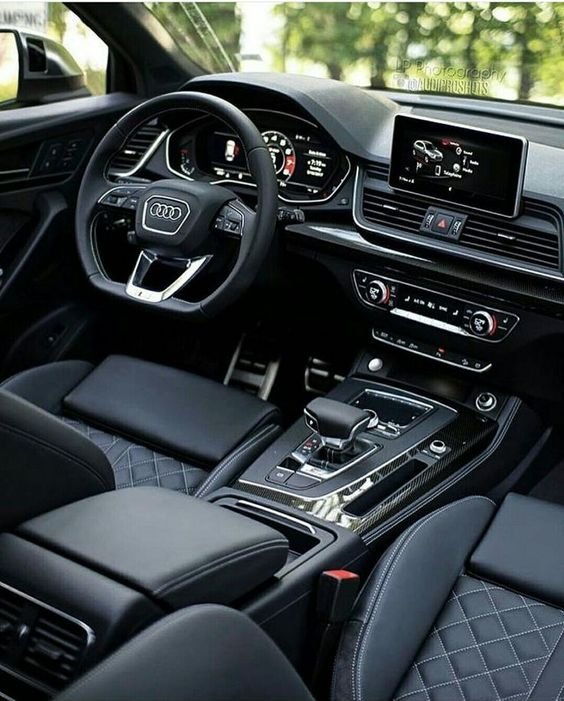
Choosing the right car is a significant decision that can impact your daily life, finances, and overall satisfaction for years to come. With so many options available, it can be overwhelming to navigate through the choices. This guide aims to simplify the process by breaking it down into manageable steps, helping you make an informed decision that suits your specific needs and preferences.
Assess Your Needs
The first step in choosing the right car is to assess your needs. Consider how you plan to use the vehicle and what features are most important to you. Here are some key factors to consider:
1. Purpose of the Car
Think about the primary purpose of the car. Are you using it for daily commuting, family transportation, off-road adventures, or long-distance travel? Your answer will help narrow down the type of car that best suits your lifestyle. For instance, a compact car might be ideal for city commuting, while an SUV might be better for a family with children or someone who enjoys outdoor activities.
2. Number of Passengers
Consider how many people will regularly travel in the car. If you have a large family, you’ll need a vehicle with enough seating and space for everyone. For single drivers or couples, a smaller car might suffice. Additionally, think about whether you need extra seats for occasional passengers.
3. Cargo Space
Evaluate your cargo needs. Do you frequently carry sports equipment, groceries, luggage, or other bulky items? If so, look for a car with ample trunk space or flexible seating arrangements that allow for additional storage. Hatchbacks, SUVs, and minivans often provide more cargo capacity compared to sedans.
4. Driving Conditions
Consider the typical driving conditions you’ll encounter. If you live in an area with harsh winters, you might need a car with all-wheel drive (AWD) or four-wheel drive (4WD) for better traction on snowy or icy roads. For urban environments with heavy traffic, a compact car with good fuel efficiency might be more practical.
5. Fuel Efficiency
Fuel efficiency is a crucial factor, especially with fluctuating fuel prices. If you have a long daily commute or frequently drive long distances, a car with high fuel efficiency can save you money in the long run. Hybrid and electric vehicles are also excellent options for those looking to reduce their carbon footprint.
6. Budget
Determine your budget before you start shopping. Consider not only the purchase price but also the ongoing costs such as insurance, maintenance, fuel, and potential financing. It’s essential to choose a car that you can afford without stretching your finances too thin.
Research and Compare
Once you have a clear understanding of your needs, it’s time to research and compare different cars. This step involves gathering information on various makes and models, reading reviews, and comparing features.
1. Create a List of Potential Cars
Based on your needs and budget, create a list of potential cars that fit your criteria. You can use online tools and resources to filter cars by type, price range, fuel efficiency, and other features.
2. Read Reviews and Ratings
Reading reviews and ratings from experts and current owners can provide valuable insights into the pros and cons of each car on your list. Look for reviews that discuss performance, reliability, comfort, and overall satisfaction. Websites like Consumer Reports, Edmunds, and Kelley Blue Book are excellent sources for unbiased reviews.
3. Compare Features
Create a comparison chart to evaluate the features of each car. Consider factors such as safety features, infotainment systems, interior quality, and technology. Pay attention to both standard features and optional upgrades. This comparison will help you identify which cars offer the best value for your needs.
4. Test Drive
A test drive is a crucial part of the car-buying process. It allows you to experience the car’s performance, comfort, and handling firsthand. Schedule test drives for the top contenders on your list. During the test drive, pay attention to the following:
– Comfort: Check the seating, legroom, and overall ergonomics.
– Performance: Evaluate the acceleration, braking, and handling.
– Visibility: Ensure you have good visibility from the driver’s seat.
– Noise Levels: Note the noise levels inside the cabin while driving.
– Technology: Test the infotainment system, navigation, and other tech features.
5. Check Reliability and Resale Value
Reliability is an important consideration when choosing a car. Look for models with a proven track record of reliability and low maintenance costs. Additionally, consider the car’s resale value. Some brands and models retain their value better than others, which can be beneficial if you plan to sell or trade in the car in the future.
Consider Ownership Costs
In addition to the purchase price, it’s essential to consider the total cost of ownership. This includes insurance, maintenance, fuel, and depreciation.
1. Insurance
Insurance costs can vary significantly based on the car’s make, model, and safety features. Obtain insurance quotes for the cars on your list to understand how much you’ll need to budget for coverage. Cars with advanced safety features and good crash test ratings often qualify for lower insurance premiums.
2. Maintenance and Repairs
Research the maintenance and repair costs for each car. Some vehicles require more frequent or expensive maintenance than others. Look for cars with a reputation for reliability and low-cost maintenance. Consider purchasing an extended warranty if you’re concerned about potential repair costs.
3. Fuel Costs
Calculate the estimated fuel costs based on the car’s fuel efficiency and your typical driving habits. Use online calculators to estimate your annual fuel expenses. If you’re considering a hybrid or electric vehicle, factor in the cost of charging or the availability of charging stations.
4. Depreciation
Depreciation is the loss of a car’s value over time. Some cars depreciate faster than others, which can impact your long-term ownership costs. Research the depreciation rates of the cars you’re considering to understand their potential resale value.
Explore Financing Options
If you’re not paying cash for your car, you’ll need to explore financing options. Understanding the different financing methods can help you make a financially sound decision.
1. Loans
Car loans are a common financing option. You can obtain a loan from a bank, credit union, or dealership. Compare interest rates, loan terms, and monthly payments from multiple lenders to find the best deal. Consider getting pre-approved for a loan to streamline the buying process.
2. Leasing
Leasing is another option that allows you to drive a new car for a lower monthly payment compared to buying. However, leases come with mileage limits and restrictions on modifications. At the end of the lease term, you’ll need to return the car or buy it out. Leasing can be a good option if you prefer driving a new car every few years and don’t mind the limitations.
3. Cash Purchase
If you have the funds, purchasing a car outright with cash can save you money on interest and finance charges. It also provides you with full ownership of the vehicle without any monthly payments. However, ensure that spending a large sum of money on a car doesn’t deplete your savings or emergency fund.
Evaluate the Dealership Experience
The dealership you choose can significantly impact your car-buying experience. A reputable dealership with good customer service can make the process smoother and more enjoyable.
1. Research Dealerships
Look for dealerships with positive reviews and a good reputation. Check online review sites and ask friends or family for recommendations. A dealership with a history of satisfied customers is more likely to provide a positive buying experience.
2. Check Inventory
Ensure that the dealership has the cars you’re interested in stock. If they don’t, ask if they can order the specific model and configuration you want. Some dealerships may also have demo or certified pre-owned vehicles that can offer good value.
3. Customer Service
Pay attention to the level of customer service provided by the dealership. Are the salespeople knowledgeable, friendly, and willing to answer your questions? A dealership that prioritizes customer satisfaction will be more accommodating during the buying process and beyond.
4. Negotiate the Price
Negotiation is a common part of the car-buying process. Research the fair market value of the car you want using tools like Kelley Blue Book or Edmunds. This information can help you negotiate a fair price. Be prepared to walk away if the dealership isn’t willing to meet your price or if you feel pressured.
5. Review the Purchase Agreement
Carefully review the purchase agreement before signing. Ensure that all agreed-upon terms, such as the price, financing details, and any additional features or warranties, are accurately documented. Don’t hesitate to ask questions or request clarifications if anything is unclear.
Finalize the Purchase
Once you’ve chosen the right car and negotiated the price, it’s time to finalize the purchase. This involves completing the necessary paperwork, registering the vehicle, and arranging for any additional services or warranties.
1. Complete the Paperwork
The dealership will handle most of the paperwork, including the sales contract, title transfer, and registration. Review all documents carefully and ensure that all information is accurate. Keep copies of all paperwork for your records.
2. Register the Vehicle
The dealership typically handles the registration process, but you may need to provide proof of insurance and other documentation. Ensure that you receive the registration and license plates for your new car.
3. Arrange for Insurance
Before you drive your new car off the lot, you’ll need to have insurance in place. Contact your insurance provider to add the new car to your policy. Ensure that you have the necessary coverage to protect your investment.
4. Consider Additional Services
The dealership may offer additional services such as extended warranties, maintenance plans, or gap insurance. Evaluate these options carefully and decide whether they provide value based on your needs and preferences. An extended warranty, for example, can provide peace of mind if you’re concerned about potential repair costs.
Enjoy Your New Car
Congratulations! You’ve successfully navigated the car-buying process and chosen the right car for your needs. Here are a few final tips to help you enjoy your new vehicle:
1. Familiarize Yourself with the Car
Take the time to read the owner’s manual and familiarize yourself with the car’s features and controls. Understanding how everything works can enhance your driving experience and help you get the most out of your new car.
2. Follow the Maintenance Schedule
Regular maintenance is essential to keep your car running smoothly and extend its lifespan. Follow the manufacturer’s recommended maintenance schedule for services such as oil changes, tire rotations, and brake inspections.
3. Drive Safely
Always prioritize safety while driving. Follow traffic laws, avoid distractions, and stay aware of your surroundings. Investing in a car with advanced safety features can provide additional protection for you and your passengers.
4. Enjoy the Ride
Finally, enjoy the ride! Whether you’re commuting to work, taking a road trip, or running errands, your new car is an important part of your daily life. Make the most of it by exploring new places, spending time with loved ones, and appreciating the freedom and convenience that comes with owning a car.
Choosing the right car for your needs involves careful consideration, research, and planning. By assessing your needs, researching and comparing different models, considering ownership costs, exploring financing options, evaluating the dealership experience, and finalizing the purchase, you can make an informed decision that you’ll be happy with for years to come. Remember to take your time, ask questions, and trust your instincts throughout the process. With the right approach, you’ll find a car that fits your lifestyle, budget, and preferences, making every drive an enjoyable experience.
ALSO READ: Mercedes-Benz AMG S 63 E Performance: Marvel on Wheels







